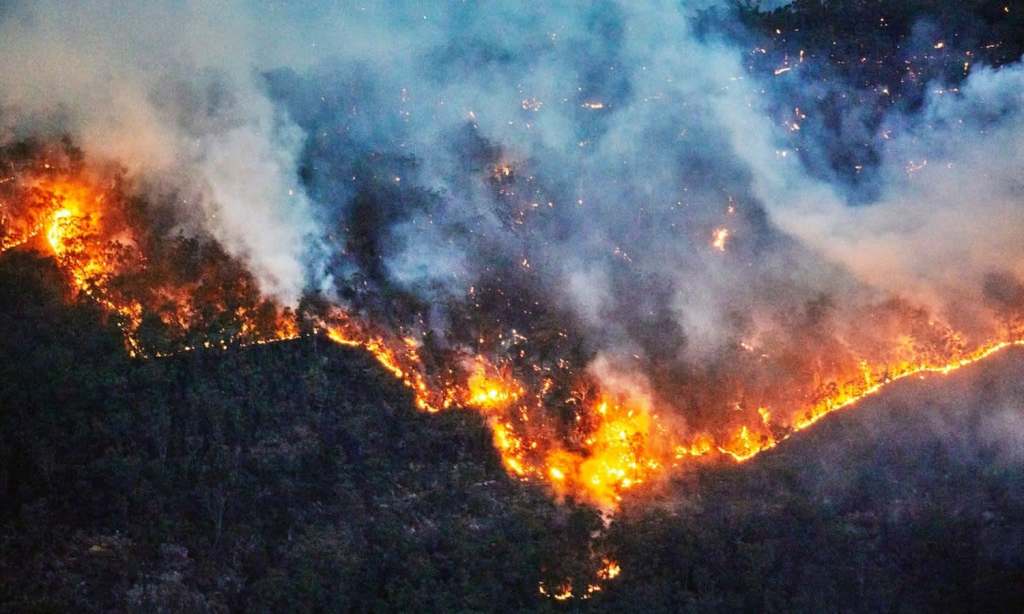Last summer’s bushfire season in Australia was devastating. More than 12.6 million hectares burned, 434 million tonnes of CO2 were emitted and roughly 80% of the population was affected by the smoke emitted from the fires.
Everyone from residents in capital cities to those living in regional towns experienced the choking bushfire smoke that lingered for months. In fact, according to The Guardian, the hazy fog that blanketed six states across six months caused an estimated 445 deaths and put more than 4,000 people in hospital.
It’s safe to say that the health implications of last summer’s bushfire season were terrible, thanks largely to the chemicals found in bushfire smoke and is one that could very well be repeated this year, as the fire season has already started in Australia.
“Bushfire smoke is a mixture of different sized particles, water vapour and gases, including carbon monoxide, carbon dioxide and nitrogen oxides,” Sotiris Vardoulakis, Professor of Global Environmental Health at the Australian National University (ANU) Research School of Population Health, told The Latch.
“Bushfires and backburning emit large and small particles that can be dispersed in the air over long distances. Large particles in bushfire smoke irritate the eyes, nose, and throat. Very small particles can penetrate deeper into our respiratory system, reach our lungs and even translocate into the bloodstream. This can cause inflammatory responses and affect several body organs. Smoke from fires also contains toxic gases, such as carbon monoxide and nitrogen oxides.”
Long before the COVID-19 pandemic required the wearing of masks, many Australians living in smoke-affected areas were donning face coverings to limit the impact of the smoke on their health during the 2019-2020 summer season.
For those living with pre-existing health conditions like asthma, bushfire smoke poses a great risk to their health, while those without respiratory illnesses can experience eye irritation, runny noses, sore throats and coughs as a result of the smoke.
“We’re often exposed to many different types of air pollution and the health effects of different air pollutants can depend on the individual,” Professor Vardoulakis said. “Certain groups may be particularly sensitive to the effects of air pollutants and bushfire smoke, including young children, pregnant women, the elderly, and the one in nine Australians who suffer from respiratory health conditions such as asthma, hay fever or bronchitis.”
As Professor Vardoulakis noted, Australians are exposed to a number of pollutants every day, so in order to mitigate the health impacts of these pollutants, including bushfire smoke, it can help to change your daily habits. To do so, Professor Vardoulakis suggests avoiding busy highways, increasing ventilation when cooking, using a HEPA filter within the home and using environmentally friendly cleaning products
“Air purifiers with HEPA filters, when appropriately used, can reduce exposure to smoke particles and significantly improve indoor air quality,” Professor Vardoulakis said. “Air purifiers with sealed HEPA filters can provide added protection from smoke as well as keep the air clean of everyday pollutants found in our homes such as dander from pets, fumes from gas stoves or volatile organic compounds (VOCs) from beauty products like hair spray.
“Over the last few months, I’ve been working alongside Dyson through its air quality backpack study in Sydney. Reworking existing technology used in its air purifiers, two air quality backpacks were given to two Australian families to help detect the air quality around them during their daily lives.
“The results from one of the participants, a Sydney-based mother, found spikes in air pollution including PM2.5, NO2 and VOCs during routine activities such as cooking, cleaning and travelling by car.”
Should Australia experience a bushfire season as deadly as the last, David Hill, a design engineer from Dyson, has shared his tips for how those living in impact areas can limit their exposure to bushfire smoke.
— Stay inside as much as possible: Unless you are asked to evacuate your area, staying inside can reduce your exposure to smoke, ashes and other air pollution. However, indoor air can still be impacted by outdoor pollution. Studies have shown that some air pollution can infiltrate indoors even through closed windows.
— Take extra precautions to protect the air in your home: Even the most well-sealed home can still allow for some outdoor air pollution to make its way inside. Air purifiers with sealed HEPA filters can provide added protection from smoke as well as keep the air clean of everyday pollutants found in our homes such as dander from pets, fumes from gas stoves or volatile organic compounds (VOCs) from beauty products like hair spray.
— Make kids a priority: According to The Thoracic Society of Australia and New Zealand, protecting the development and health of the lungs of children under five will impact the future respiratory heal and quality of life for the population. Make sure your children take the same – if not more – precautions to reduce their exposure. Consider moving existing purifiers or adding new ones to their bedrooms overnight.
— For those who must go outside, wear an effective mask: If you must go outside, be sure to protect yourself by wearing an effective mask. According to Professor Vardoulakis, planning our daily activities to reduce exposure to outdoor pollution, and creating a clean air space in our own homes by keeping doors and windows shut and using an air purifier with a high-efficiency particulate air filter, is probably the best option for most families.







